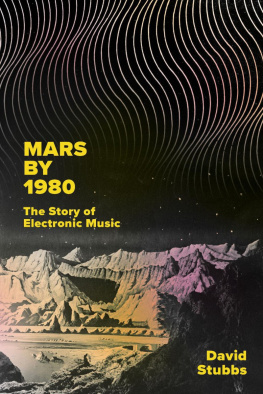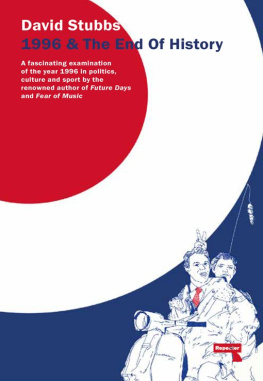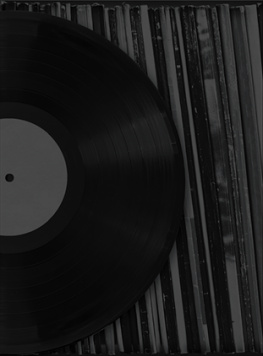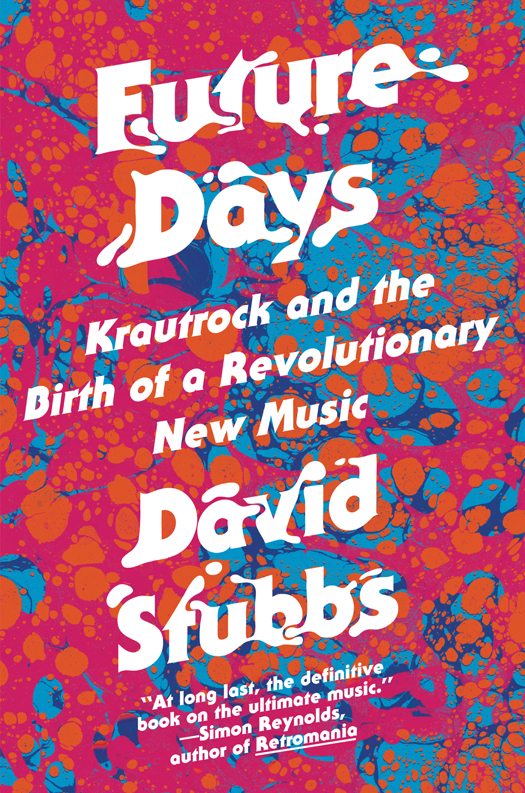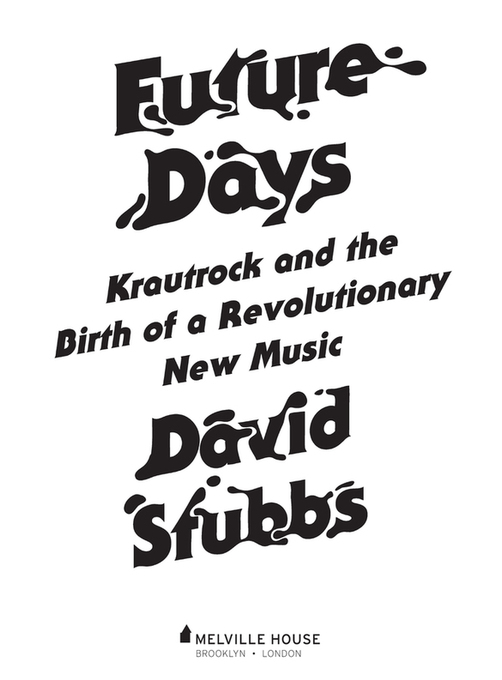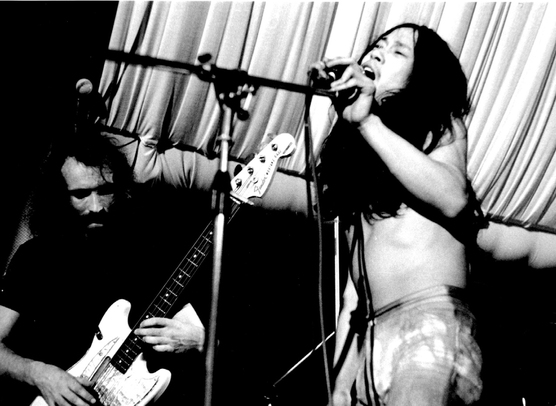by the same author
FEAR OF MUSIC: WHY PEOPLE GET ROTHKO BUT DONT GET STOCKHAUSEN
JIMI HENDRIX: THE STORIES BEHIND EVERY SONG
EMINEM: THE STORIES BEHIND EVERY SONG
Future Days
Copyright 2014 by David Stubbs
First published in Great Britain in 2014 by Faber and Faber Ltd
First Melville House Printing: July 2015
Melville House Publishing
46 John Street
Brooklyn, NY 11201
and
8 Blackstock Mews
Islington,
London N4 2BT
mhpbooks.com facebook.com/mhpbooks @melvillehouse
ISBN: 978-1-61219-475-2
A catalog record for this book is available from the Library of Congress
v3.1
Contents
Unna, West Germany, 1970
Can
This footage has lain dormant since it was first broadcast well over forty years ago, one among a pile of cylinders in the archive rooms of the German WDR TV station. Its scarcely been seen since only through connections to connections am I able to sit in a darkened room and experience it again on a screen.
Weve crash-landed back in the monochrome mists of time, back in late 1970, in the small town of Unna, in North Rhine-Westphalia, in what is then West Germany. Even the youngest person present in this makeshift concert hall, a giant, improvised tent, would be of pensionable age now, though strangely theyd probably not look at all out of place if they mingled with todays generation of postmodern hipsters. The hair, the clothes, the cool rimmed specs, trimmed beards, polo-necked jumpers theyd all pass. Was that you, Grandma? Grandad?
Its a televised gig, three hours in duration. Black and white. By todays standards, it would be considered dreadful television. Theres no compring, no way of knowing whos coming on next, no order, no chaos, no way of knowing whos running things. Raw, grey footage, broadcast as it happened. Two stages, neither of them elevated, at either side of a large screen, onto which are projected a series of bizarre, short films, inexpertly loaded into the machine. In the first of them, a severe-looking, middle-aged local arts director crops up, staring out with an inadvertent Big Brotherly air from the screen through the thick-rimmed spectacles of his blighted generation. He barks out a few stern words, general reflections on art and culture in West Germany.
The camera scans jerkily, almost nervously about the crowd, who are as inattentive to the improving words of the overbearing arts director as kids before the headmaster in a school assembly. Hardly anybody is drinking, but drifting curlicues of smoke gently thicken the air. A few young men have struck up a chant of Fertig, los! (Cmon, lets go!). The rest, either cross-legged on the floor, standing or gently canoodling with their partners, represent a gamut of passive emotions, their pale faces bathed in the reflected light from the stage set-up bored, intrigued, bemused, patient, rapt, amused, checking out their images on the monitors, reflecting on the fact that theyre here for a good reason, even if theyre not sure what it is. This, after all, is 1970 and everything is new.
Without the slightest of fanfares, a dimming of the lights or even an introduction, four young men take up their instruments on the left of the stage. The drummer discreetly establishes a repetitive, percussive pattern. The moustached, intent bassist bobs busily as he maintains a metronomic pulse. A cigar hangs louche off the bottom lip of the young guitarist, who at least faintly looks the swaggering, Jaggerish part of a rock star, as he chops out regular licks. A bespectacled man, slightly senior, is positioned behind the keyboards, both monitoring and maintaining the musical flow. A frail young Japanese singer, hair hanging about him, stands almost shivering at the centre of all this. To call him a frontman would be a misnomer. Hes caught in the middle, in the maelstrom. Its as if he is channelling the sound, as if it is inflicting some sort of compulsory catharsis on him. His fey vocals swirl in the mix. Where is the leader? Who is directing whats happening onstage? Somethings happening, but what? None of the musicians seems to be doing anything in particular, yet the music seems almost to elevate the giant tent from its moorings. Its going everywhere, nowhere and somewhere at the same time.
Just one song, a wave of polite applause and then back to another intermission a film of student types lounging around on sofas in a room with a prominent Che Guevara poster, engaged in mumbling political conversation. The room, briefly shaken, settles back down again. Music, then political discussion how do these things connect with each other? Who was that group? That was The Can, right? Will we hear any more from them?
Now, a strange, buzzing drone begins to emanate from stage right. Its reminiscent of warplanes, circling, swooping and strafing, and might well make one or two of the older cameramen wince with its reminders. As eyes, and the camera, swing to the right-hand corner of the stage, we see a mullet-headed twenty-something, his leather jacket not quite offsetting the nerdiness of his glasses. A Spiesser, the Germans might say a square. A Spiesser in leather clothing. Hes working an upright, tubular instrument, a hybrid of guitar and synthesizer. Nobody recognises him. The strafing carries on for several minutes. The crowd look on patiently, maybe hoping the plane will come in to land. Is this music? Are we allowed to leave the tent? Impossible. Its packed solid. Gradually, however, a rhythmic underpinning emerges. Theres a drummer, a Viking-like, crooked-nosed presence whose tank top accentuates his muscular frame. The crowd, thrown a bone, begin to clap and stomp along. Someone starts keening furiously away on a whistle. The drums intensify, the Spiesser tussles with his electric instrument, which emits clipped, farting noises. Maybe these are the birth pangs of something. Who was that group? And why was their set decorated with a traffic cone? Was the cone supposed to make it art?
But then, another intermission. This time, a resounding clip of a tune by the almost supernaturally awful Heino rings round the tent rafters. Hes a superstar of Schlager, the ultra-kitsch German MOR to which the new German music is utterly antithetical. The audience begin to clap along, jeering and sardonic and yet, you feel, secretly a little grateful for the tonal respite and the familiarity of the tune. This segues abruptly into a clip of B. B. King. The blues is loved in West Germany then, and later, blues artists will get more work in West Germany and Japan than back in the USA. However, in the context of tonights strange, novel proceedings, the blues feel as out of kilter as Heino.
The group on the left slide up and strap on their guitars again. Oh Yeah. Its from an album called Tago Mago but theres no apparent flicker of recognition from the crowd. The four musicians strike up by rote this is no sloppy, inferior live version of a studio construct; this is effortless replication of the technical, levitating brilliance of the track as presented on the album, with added live extensions. Were going to hear something now. Lift-off. The Japanese guy is dissolving before our eyes, a dervish, dashing and thrashing the air with his yelping, wordless, Pollock-like sprays of paint onto an invisible canvas. A blonde girl starts blowing bubbles. Idiot dancing breaks out. Others nod furiously, affirmatively. Nothing else is happening in Unna tonight. Nothing better is happening in Unna tonight. We dont know what this is, but this is it. Such tantric restraint, the way the group lock in their potential energy. No release, so liberating. They could go on forever.


